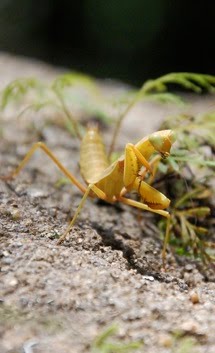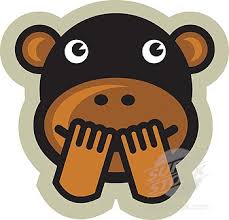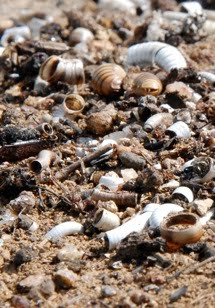The See-Through Alien in Our Kitchen
 Geckos are more than just cute insurance salesmen. They are amazing little lizardy beasties. They ring the world and live where ever there is a nice toasty climate. That's why you don't find any back in New Jersey, but I do find a lot here in Madagascar. And not only do I find the lizards in our house, at work, in the forest, almost every one I find lives only here on the lovely Red Island. About 92% of the reptiles here live here and only here. (That's nothing. A whopping 99% of the frogs are endemic.)
Geckos are more than just cute insurance salesmen. They are amazing little lizardy beasties. They ring the world and live where ever there is a nice toasty climate. That's why you don't find any back in New Jersey, but I do find a lot here in Madagascar. And not only do I find the lizards in our house, at work, in the forest, almost every one I find lives only here on the lovely Red Island. About 92% of the reptiles here live here and only here. (That's nothing. A whopping 99% of the frogs are endemic.)
Check out some pics of a few geckos we've seen so far. If you are reading this with your class, please ask your students to raise their hand each time they hear something they didn't know before.

This little gecko and a few of his friends live around our house. This species seems to like the dark. But that's ok, because geckos' eyes are much better at seeing when the lights are out. And we love having them as house guests, because they eat the mosquitos that buzz around at night. They might see better than us, but we got them beat when it comes to eyelids. We have them; they don't. That means we blink when we need to keep our eyeballs nice and sparkly and moist. When they want to clean their peepers, they have to lick them. Watch the gecko in the Geico commercials. He usually licks his eyeballs once or twice.

This is the most famous of the Malagasy geckos: the day gecko. It is also one of the largest day geckos in the world. And, in case you haven't figured it out, a day gecko is not nocturnal. They spend their days hunting down insects, grubs, worms, etc.

Those fabulous feet. A gecko could make Spiderman jealous. Geckos can pretty much walk up, across or upside down on about anything they want. Maybe Geckoman vs Spiderman could be the next big comic? Spiderman could probably sneak in a punch or two when Geckoman was licking his eyeballs though.

Though this one wasn't blending into our bungalow very well, nocturnal geckos are masters of disguise. They can blend in with the best of them. Which is good for them and bad for their prey and predators. They cannot change color like chameleons though. But in case a predator does find them, they do have a few tricks up their sleeves. They can drop their tail and have it dance around and distract the would-be diner as they scurry away. They can also shoot out a stinky smell and even poo if the tail trick doesn't work. Yikes.

A see-through gecko friend in our kitchen. Though we didn't here a peep out of this little girl, we could have. Gecko's are the only lizards in the world that can make a sound other than "hissssss." They can bark and chirp for goodness sake.

[Photo by Bjorn Christian Torrissen]
My what hairy feet you have grandmother! A gecko may not look hairy, but its feet surely are. Each square millimeter (about the size of a big grain of sand) has over 14,000 hairlike things called setae. It takes about 20 or so of these setae to be as thick as a hair from your head. And the hair doesn't end there. At the tip of each of the setae are as many 1,000 even tinier hairs called seta. That means a grand total of about 14 million sticky hairs on each sand-grain-sized speck of foot. No wonder they can walk upside down on glass. NASA loves to study gecko feet to see if they can come up with a way for astronauts to walk on the outside of spaceships and space stations the same way.

















